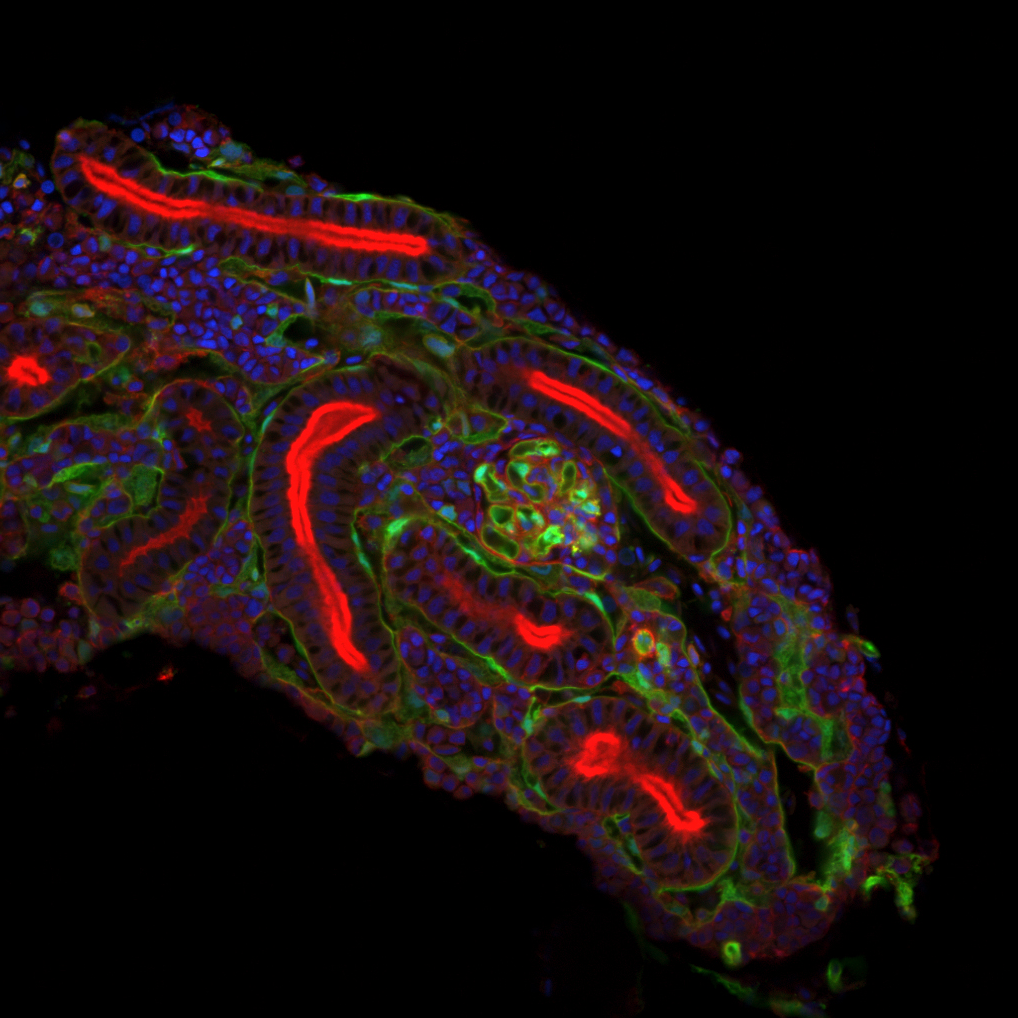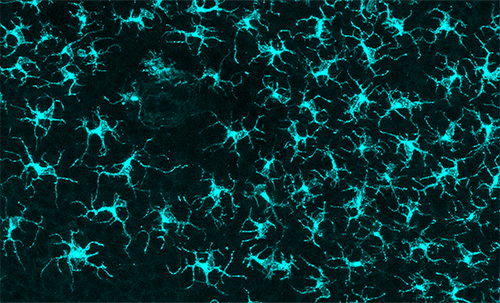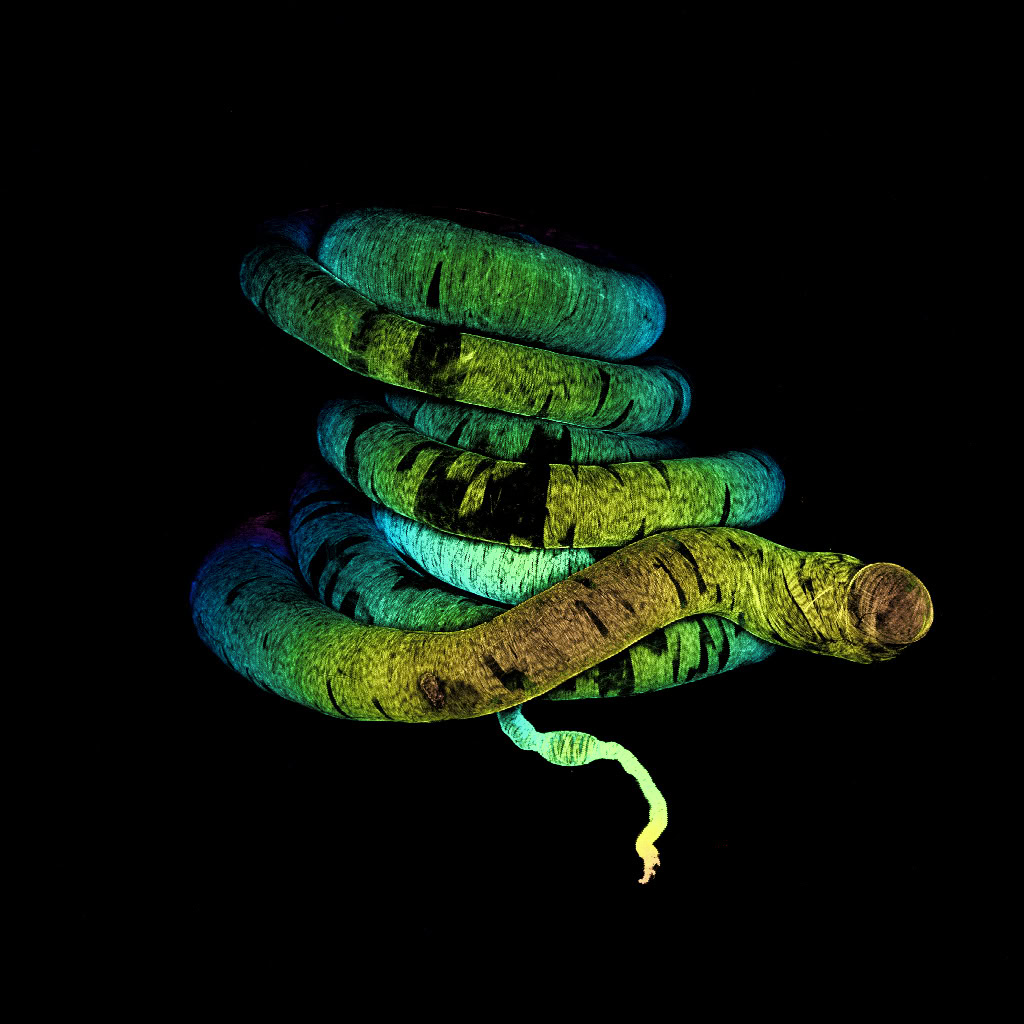Image Slide: Nuclei of pupal Drosophila pseudoobscura developing male gametes stained with Dapi. Creator: Maik Bischoff, Peifer Lab
Due to illness, the DGZ Office is currently not occupied; for urgent DGZ-related matters please contact sandra.iden@uni-saarland.de
News
JCS interview with Sandra Iden ahead of our 50 year anniversary meeting 2025
Sandra Iden is Professor and Chair of Cell and Developmental Biology at Saarland University in Homburg, Germany. Her research focuses on cell–cell communication in epithelial tissue homeostasis, with a major emphasis on understanding the mechanisms that control cell polarity and cytoarchitecture, and heterotypic interactions between epithelial cells and non-epithelial tissue-resident cell types. Sandra is currently President of the German Society for Cell Biology (Deutsche Gesellschaft fü r Zellbiologie; DGZ), which is celebrating its 50th anniversary year in 2025. We spoke with Sandra over Zoom to learn about her career path, her journeys into leadership in science, and how she thinks the DGZ and other scientific societies can best serve the research community today and into the future.
Zellen verstehen – Krankheiten entschlüsseln
Die Deutsche Gesellschaft für Zellbiologie (DGZ) wird 50

Zellen sind die kleinsten lebendigen Einheiten unseres Körpers. Wie Zellen ihre vielfältigen Aufgaben erfüllen, untersucht die Zellbiologie. Dazu vereint sie verschiedene wissenschaftliche Fachrichtungen wie zum Beispiel die Genetik, Biochemie, Morphologie und Entwicklungsbiologie. Nur im Zusammenspiel der Fachrichtungen können zelluläre Lebensvorgänge aufgedeckt und die Grundlagen von Erkrankungen entschlüsselt werden. Zellbiologische Forschung wird hierzulande durch die Deutsche Gesellschaft für Zellbiologie (DGZ) gefördert. Nun feiert die DGZ ihren 50. Geburtstag.
The DGZ would like to share donation links to help rebuild research labs of the Weizmann Institute
The DGZ would like to share donation links to help rebuild research labs of the Weizmann Institute.
Events
25. November 2025, DGZ Focus Workshop Cilia & Centrosomes
organized by David Mick and Dagmar Wachten
24. February 2026, DGZ Focus Workshop Membrane Trafficking and EVs
Francesca Bottanelli, Kerstin Menck
35th Annual Meeting of the Society for Virology (GfV 2026)
17.-20. März 2026
Heidelberg, Deutschland
Information: GfV 2026 – CfA
31. March 2026, DGZ Focus Workshop Cytoskeleton and Molecular Motors
Franziska Lautenschläger, Anne Straube
28. April 2026, DGZ Focus Workshop Cell Polarity and Cell Migration
Virginie Lecaudey, Markus Engstler
Imaging Cell Dynamics
Montanyá Hotel, Catalonia, Spain
11-14 May 2026
Information: https://www.biologists.com/meetings/jcsimaging/
Adult zebrafish mesonephros cryosection. Cryosection of the mesonephros from an adult fli1a:GFP Danio rerio, stained with Phalloidin (red) to label the tubular system and DAPI (blue) to stain nuclei. GFP is beautifully expressed in the capillary tuft of the glomeruli (middle).
Creator: Mathieu Preussner, Lab: Virginie Lecaudey
Creator: Annika Graband, Iden lab
Drosophila viridilis testis with musculature stained with phalloidin.
Creator: Maik Bischoff and Sarah Clark, Peifer Lab, UNC Chapel Hill



